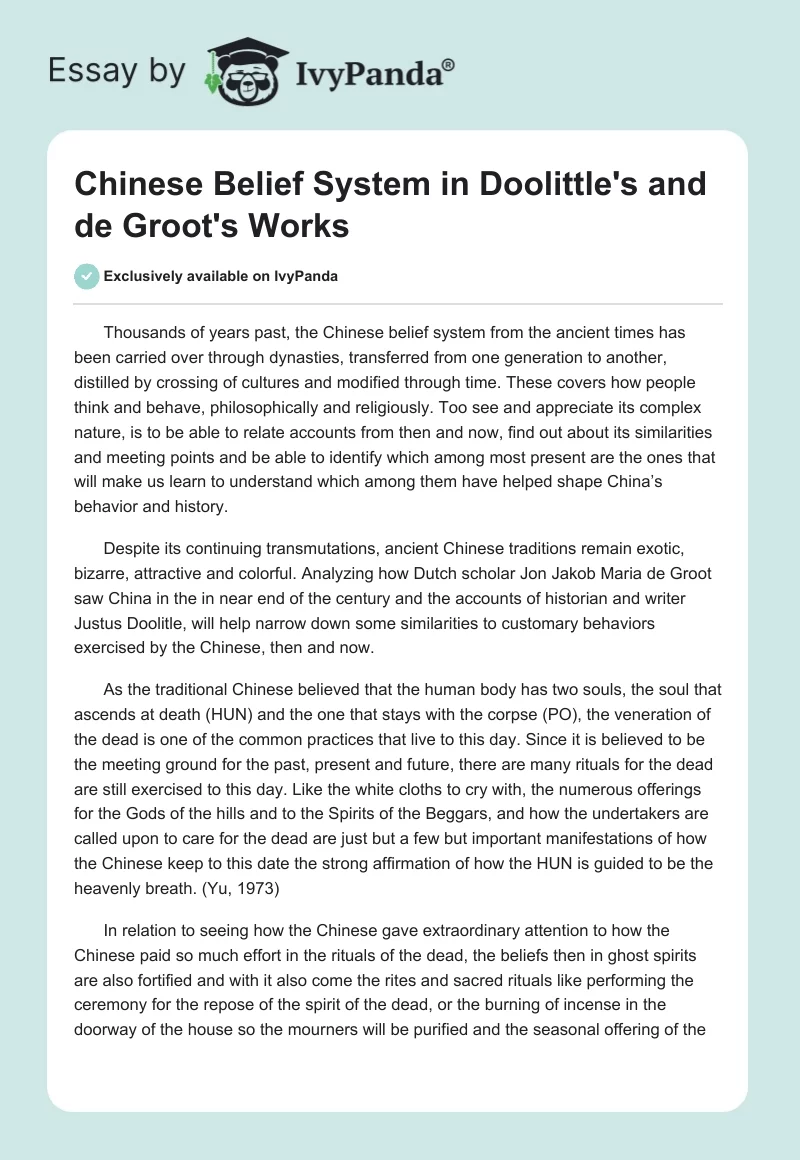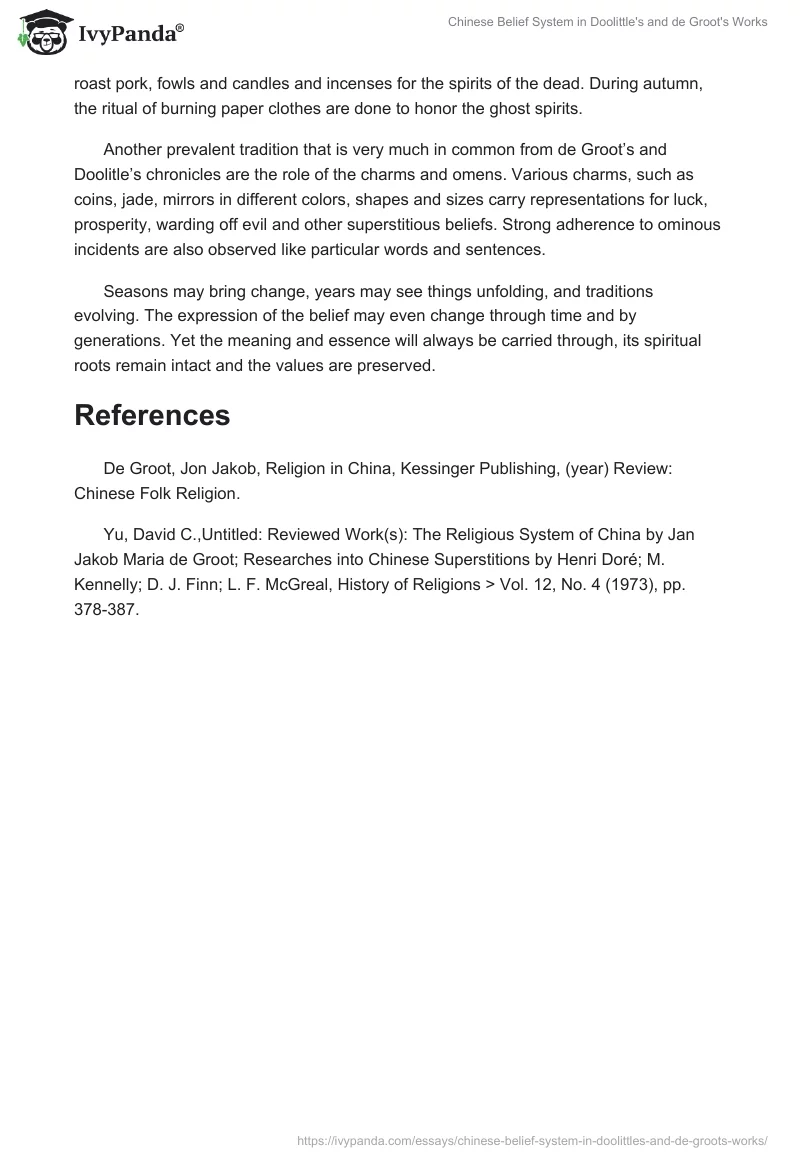Thousands of years past, the Chinese belief system from the ancient times has been carried over through dynasties, transferred from one generation to another, distilled by crossing of cultures and modified through time. These covers how people think and behave, philosophically and religiously. Too see and appreciate its complex nature, is to be able to relate accounts from then and now, find out about its similarities and meeting points and be able to identify which among most present are the ones that will make us learn to understand which among them have helped shape China’s behavior and history.
Despite its continuing transmutations, ancient Chinese traditions remain exotic, bizarre, attractive and colorful. Analyzing how Dutch scholar Jon Jakob Maria de Groot saw China in the in near end of the century and the accounts of historian and writer Justus Doolitle, will help narrow down some similarities to customary behaviors exercised by the Chinese, then and now.
As the traditional Chinese believed that the human body has two souls, the soul that ascends at death (HUN) and the one that stays with the corpse (PO), the veneration of the dead is one of the common practices that live to this day. Since it is believed to be the meeting ground for the past, present and future, there are many rituals for the dead are still exercised to this day. Like the white cloths to cry with, the numerous offerings for the Gods of the hills and to the Spirits of the Beggars, and how the undertakers are called upon to care for the dead are just but a few but important manifestations of how the Chinese keep to this date the strong affirmation of how the HUN is guided to be the heavenly breath. (Yu, 1973)
In relation to seeing how the Chinese gave extraordinary attention to how the Chinese paid so much effort in the rituals of the dead, the beliefs then in ghost spirits are also fortified and with it also come the rites and sacred rituals like performing the ceremony for the repose of the spirit of the dead, or the burning of incense in the doorway of the house so the mourners will be purified and the seasonal offering of the roast pork, fowls and candles and incenses for the spirits of the dead. During autumn, the ritual of burning paper clothes are done to honor the ghost spirits.
Another prevalent tradition that is very much in common from de Groot’s and Doolitle’s chronicles are the role of the charms and omens. Various charms, such as coins, jade, mirrors in different colors, shapes and sizes carry representations for luck, prosperity, warding off evil and other superstitious beliefs. Strong adherence to ominous incidents are also observed like particular words and sentences.
Seasons may bring change, years may see things unfolding, and traditions evolving. The expression of the belief may even change through time and by generations. Yet the meaning and essence will always be carried through, its spiritual roots remain intact and the values are preserved.
References
De Groot, Jon Jakob, Religion in China, Kessinger Publishing, (year) Review: Chinese Folk Religion.
Yu, David C.,Untitled: Reviewed Work(s): The Religious System of China by Jan Jakob Maria de Groot; Researches into Chinese Superstitions by Henri Doré; M. Kennelly; D. J. Finn; L. F. McGreal, History of Religions > Vol. 12, No. 4 (1973), pp. 378-387.


